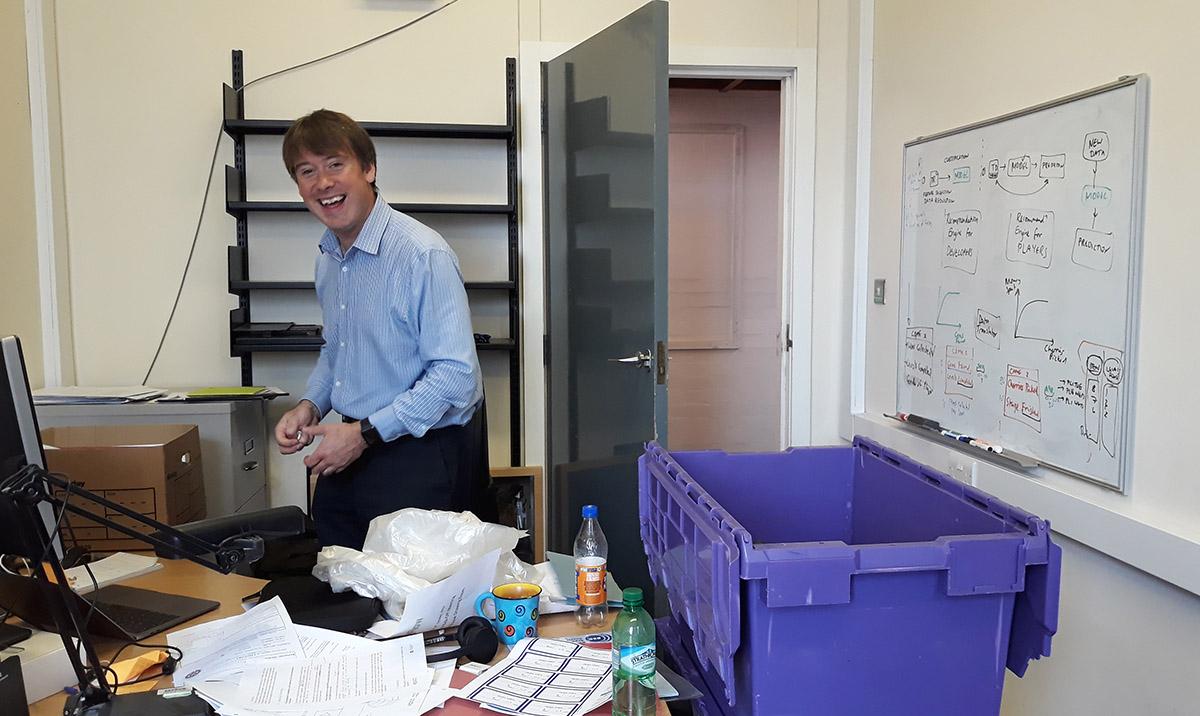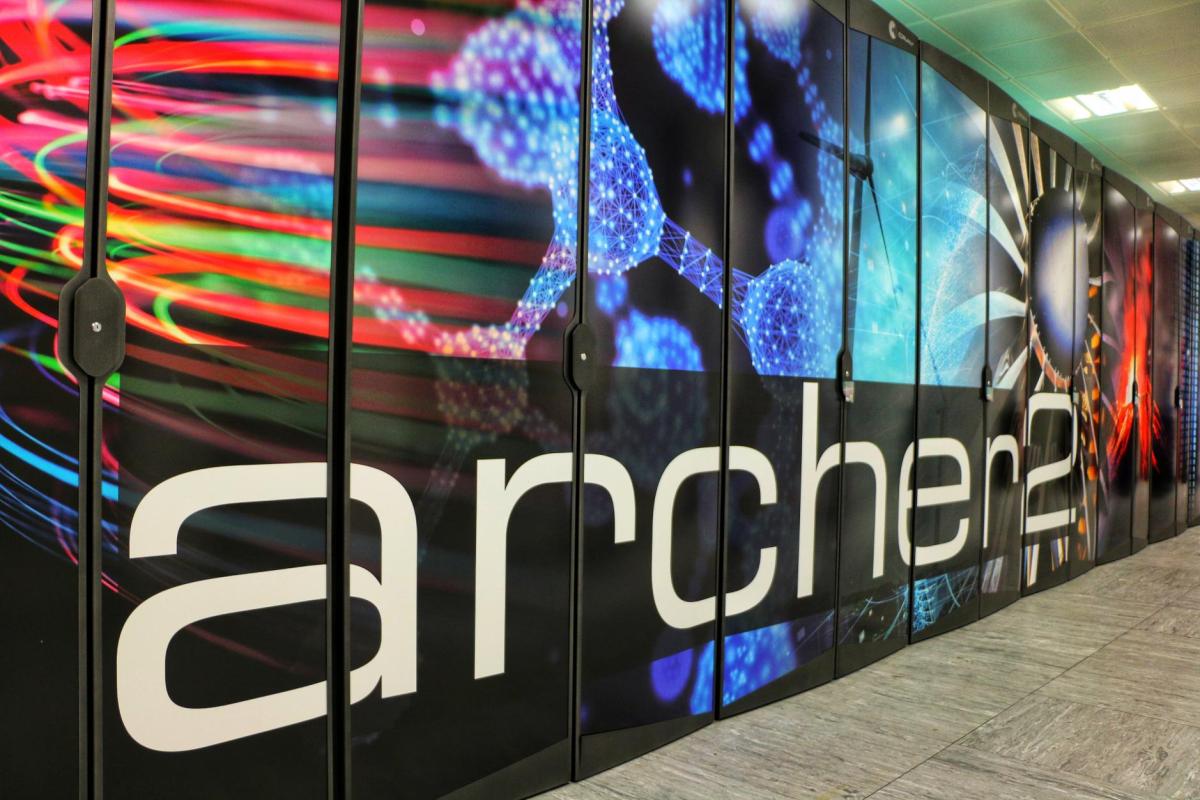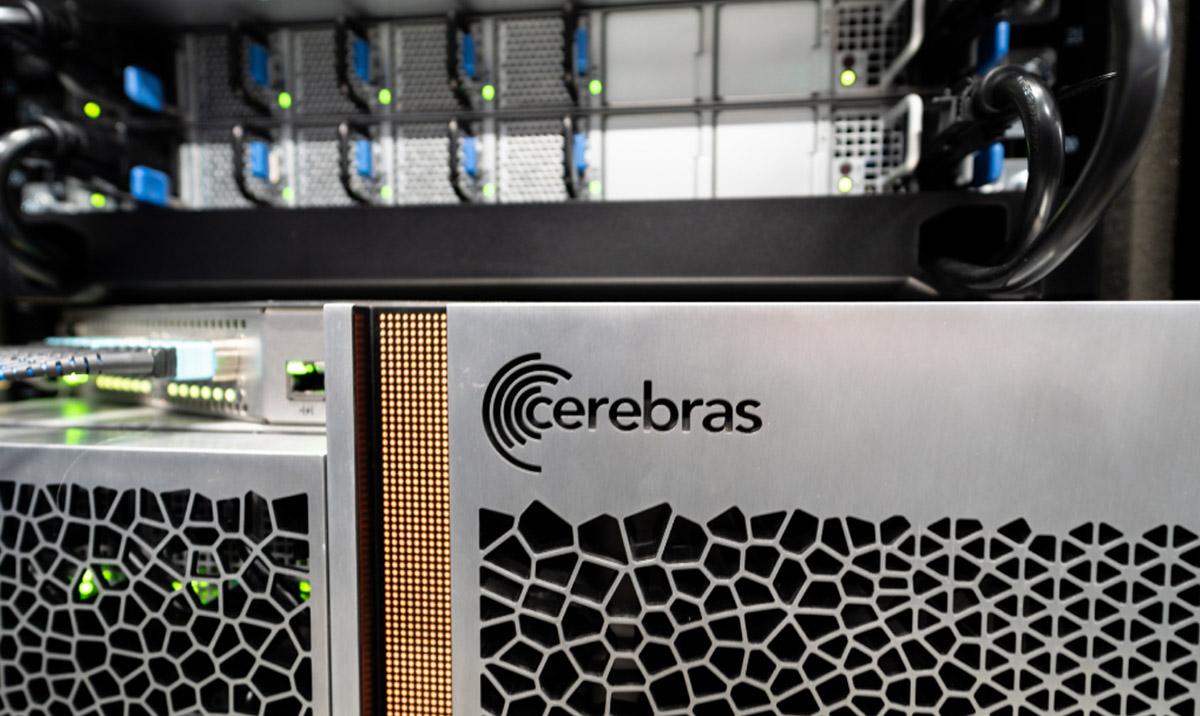Celebrating five years at the Bayes Centre
4 September 2023
At the end of August 2018, EPCC left the James Clerk Maxwell Building (JCMB) at the King’s Buildings in Edinburgh, where it had been located since EPCC's inception in 1990. The following Monday staff reported for work at the new Bayes Centre in the heart of Edinburgh. Mark Sawyer looks back at an eventful five years that have passed since that move.

The Bayes Centre
The £45m Bayes Centre building, which became EPCC’s new home, is the University of Edinburgh’s innovation hub for data science and artificial intelligence. Officially opened in October 2018 by the University Chancellor, HRH The Princess Royal, it provides space for approximately 650 researchers, students, and external partners over five floors. Collaboration is built into its architecture, with open spaces designed to bring together its occupants from academia, industry, and the public sector. Approximately 100 members of EPCC staff occupy the second floor of the Centre, sharing it with our MSc and PhD students.

The transfer from JCMB went very smoothly with just a single day of working at home before we were in place. As befits a fresh start, many staff members (including myself) took advantage of the opportunity for a major de-clutter. Nevertheless, a formidable array of purple crates was waiting for us as we settled in to the new surroundings.

Data Science, DDI, and EIDF
Moving to the Bayes Centre was more than a change of scenery; it marked EPCC’s new role in the Data-Driven Innovation (DDI) initiative, a cluster of innovation hubs set up under the Edinburgh and South-East Scotland City Region Deal. The Bayes Centre innovation hub brings together around 600 world-leading applied data science researchers, talented students, and staff from organisations across the public, private and third sectors into one facility.
EPCC has a central role in the DDI, building and operating the Edinburgh International Data Facility (EIDF), which underpins the DDI’s activities. EIDF comprises a set of high-powered computational and data services which will continue to grow and evolve in response to users’ requirements.
The Covid-19 pandemic
In August 2018, as crates were being unpacked in the Bayes and shelves in new offices filled, few would have believed that 18 months later we would be moving out of the building again, this time to our own homes. In March 2020 it became apparent that the only hope of containing Covid-19 was to severely restrict human physical interaction.
EPCC responded to this challenge with remarkable resilience. A committee had been meeting regularly in the weeks leading up to the ‘lockdown’ to plan for this eventuality. Within a day of the Bayes Centre closing, EPCC had set up virtual meeting rooms to enable our regular project business to continue, with an online coffee-room enabling staff to enjoy some social contact. Many staff already had experience of collaborating remotely with project partners, which enabled a smooth transition to the new way of working. With the exception of some essential staff working on-site at EPCC’s Advanced Computing Facility (ACF), EPCC continued all its projects and services entirely online, also bringing in new staff, running training courses, and even holding a virtual Christmas party.
With the gradual lifting of Covid-19 restrictions, building occupancy at the Bayes Centre is approaching pre-pandemic levels. Hybrid working is the new normal at EPCC and is generally agreed to be a success.

HPC: as important as ever
EPCC’s central role in the DDI does not mean that its interest in traditional HPC has declined. Quite the opposite is true. The period of the pandemic coincided with the launch of the ARCHER2 National HPC Service – the successor to the ARCHER service which delivered over 6 billion core-hours of compute. ARCHER2 has over ten times the capability of its predecessor and reinforces our position as the UK’s leading HPC centre. The service’s installation and launch were carried out during the time of greatest restrictions on travel and working conditions – a remarkable achievement for those concerned.
The National HPC Service has since been accompanied by the arrival of smaller-scale systems aimed at exploring new technologies and fostering early adoption. These include the Fulhame system, based on ARM technology, and a Cerebras CS-2 powered by the high-performance Wafer Scale Engine (WSE) processor combined with an extremely large-memory HPE Superdome Flex Server system for AI applications and massive data handling capability. Its predecessor at EPCC, the CS-1, was the first such system in Europe.

The next five years
The five years since we moved to Bayes Centre have seen many developments at EPCC that go far beyond a change of postcode. We have built on our core strengths to maintain our position as the UK’s leading HPC centre and expanded our expertise into data science and data-driven innovation. We now operate Trusted Research Environments (sometimes called Safe Havens) for handling sensitive or controlled data, and the Edinburgh International Data Facility is demonstrating its value to research and business. With our goal of a UK Exascale service within reach, we look forward to exciting times ahead.

